Photos and blog post courtesy of Deborah Naslund
I was very fortunate to visit to our prairies last week and capture (in photos only!) some of our star early bloomers. So, while we are all stuck at home for now, I want to share with you the walks I took last week through Scatter Creek Wildlife Area and Mima Mounds Natural Area Preserve just before state agencies had to close these public lands due to COVID-19 protection measures. Here’s the first installment: Scatter Creek.
On Tuesday, March 24th, I wandered through the south unit of Washington Dept. of Fish and Wildlife’s Scatter Creek Wildlife Area. This area contains a beautiful fragment of our unique South Puget Sound prairie/oak woodland ecosystem. In addition to mounded prairie, there are stands of Garry oak and riparian wetland areas. Because of this diversity of habitats, Scatter Creek Wildlife Area supports a wide variety of native plant and animal species.
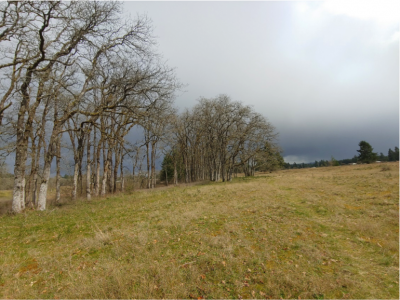
Quercus garryana
Garry oak communities were once widespread on the west side of the Cascade Mountains, in the lowlands of the Puget Trough. Now, because of extensive development and agricultural clearing, less than 5% of the original extent of these communities remain. More on these unique plant communities in future post.
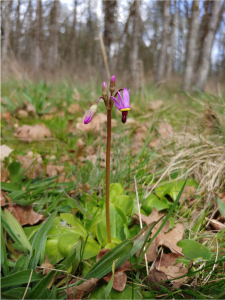
Dodecatheon hendersonii
Walking along the trail paralleling a stand of oaks, I was greeted by the delicate and aptly named broad-leaved shooting star, Dodecatheon hendersonii. This beauty is one of our first prairie perennials to bloom. The unique structure of Dodecatheon flowers make them dependent on pollination by native bumble bees.
For more in-depth information on the dependency between South Sound prairie plants and their pollinators, see Cascaidia Prairie Oak’s post on Pollinators.
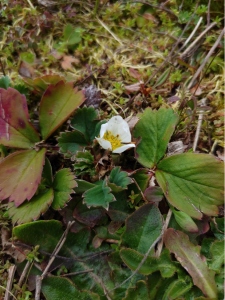
Fragaria virginiana
Wandering around to the other side of this stand of oaks, I was delighted to find a wild strawberry (Fragaria virginiana) in bloom. Usually blooming from May to August, these individuals are thriving in the warm microclimate between mima mounds, extending their flowering season by months. It’s not surprising to find these wild strawberries growing in a variety of microclimates on the prairie; their overall distribution in Washington ranges from ocean shores to subalpine mountain environments demonstrating their adaptability to a wide range of habitats. The leaves of Fragaria virginiana often appear noticeably blue-green as you see in the emerging new leaves in this picture, giving rise to its other common name, blueleaf strawberry.
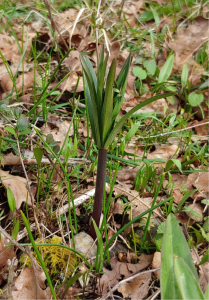
Fritillaria affinis
Back under the oaks, several chocolate lilies, Fritillaria affinis, were sprouting, bring the promise of flowers to come. Like camas, the starchy bulbs of the chocolate lily have been and continue to be an important food source for many Native peoples of the Puget Sound area. But note: they don’t taste like chocolate and must be cooked properly to be edible! These flowers are uncommon on our prairies and should be left undisturbed by the general public.
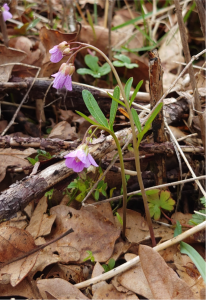
Cardamine nuttallii
On my final swing through the area, I found several Nuttall’s toothwort (also known as oaks toothwort), Cardamine nuttallii, poking up through the leaf litter near the woodland edge. Another early bloomer and harbinger of spring, I find these in my yard under old Douglas firs and along our community open-space trails. So, when the rain clouds clear this week, take a walk through your neighborhood green space and see if you can find these beauties, or any other early bloomers that are brightening our spring days.

